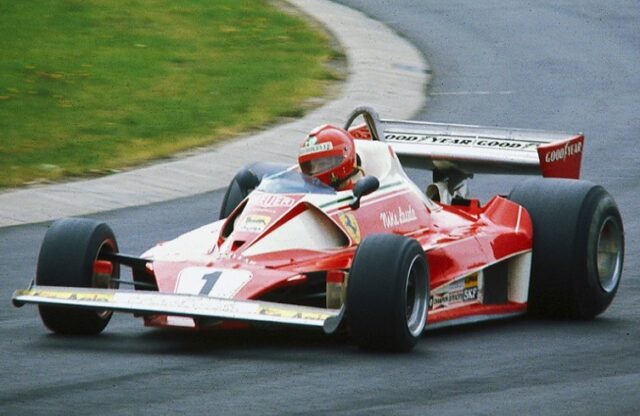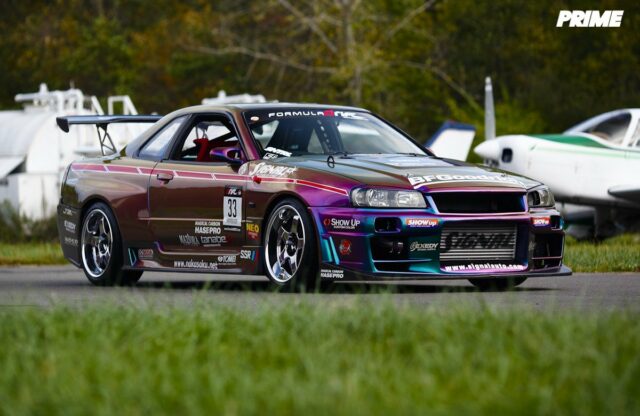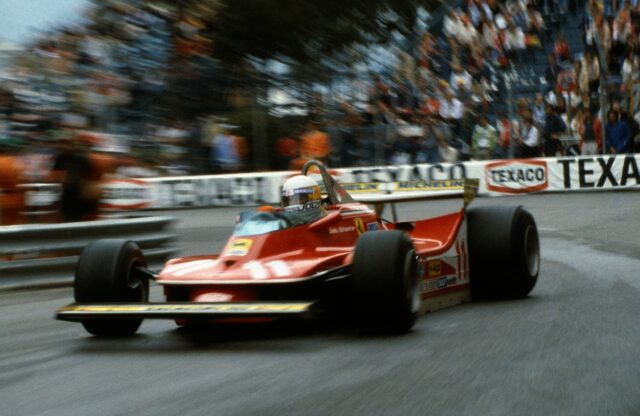Words: Nathan Chadwick | Photos: DON WALES Photography
F1 legends such as Sir Jackie Stewart, Martin Brundle and Eddie Cheever joined a host of former mechanics, designers and other staff from Tyrrell at the Brooklands Museum to celebrate the publication of a new book on the team.
The book, entitled Tyrrell: The Story of the Tyrrell Racing Organisation, has been a labour of love for author Richard Jenkins. Tyrrell arrived on the F1 scene in 1968 as a privateer, and within just a few years had garnered three Drivers’ Championships and a Constructors’ Championship. Although the team would fail to repeat the halcyon days of the early-to-mid 1970s, the team developed a strong following among the sport’s fans, and would sporadically taste success before being acquired by British American Racing in 1998. The team’s descendants flowed into Honda, Brawn GP and now the Mercedes-AMG team.
The book is published by Evro Publishing, and chronicles the history of the famous team with in-depth insight from team members either side of the pit wall and paddock. It contains many previously unseen photographs, too.
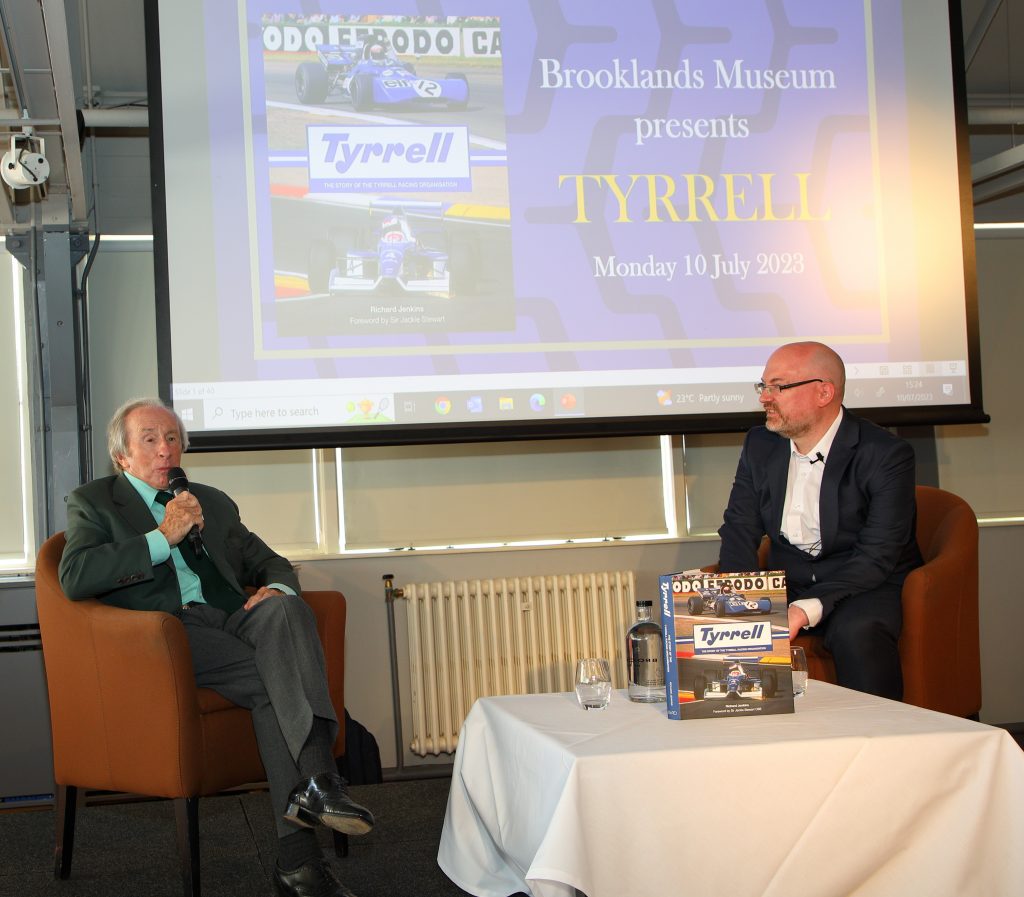
At the head of it all was Ken Tyrrell, who navigated the team through to the start of the 1998 season with very little in the way of funds. “Ken was a remarkable man – he did things his own way,” said Sir Jackie Stewart. “Ken pushed people along, particularly his mechanics – for me, they were the best. Forget the World Championships or Grand Prix victories, if it wasn’t for them I wouldn’t be here today. Whenever I got into a [Tyrrell] car, I felt comfortable.”
Sir Jackie’s first meeting came at Goodwood in 1964, in a private test session for a shot in Formula 3 with Bruce McLaren, John Fitzpatrick and Warwick Banks. “I was a shooting guy at the time, but I saw that Ken was a good operator,” he remembered. Sir Jackie, then aged 24, had been spotted by Goodwood’s circuit manager Robin McKay as a potential talent, having watched the Scot break the sports car lap record in an Ecurie Ecosse Cooper Monaco. “Bruce was there to set a time – and for whatever reason he must have been having a bad day. I went quicker than he did, and that was the day I got the contract.”
Sir Jackie would claim the first of three F1 drivers’ titles with Tyrrell in 1969, then running as a privateer team. However, engine-supply and sponsor machinations meant that Tyrrell started to develop its own car, chassis 001 – which was at Brooklands for the event, and is still owned by the Tyrrell family. “I was leading in Canada by a large margin, but had a mechanical failure,” remembered Sir Jackie.
Reflecting on Tyrrell’s longevity in the public consciousness, Sir Jackie puts the popularity down to Ken himself. “He was a tough guy – I think I got off with a lot because it was the first time for him in Formula 1,” he said. “There’s a great collection of very good people who went through the experience of working for Tyrrell. Colin Chapman was the main man at the time, and was a real sharp businessman. Most of the other teams were not like that – Ken was a man of his own way, and he drove people his own way, he looked after his staff very well. He would pay his mechanics very well, which was different to other mechanics [for other teams] who earned very little money for very long hours. There were very few of us at [Tyrrell] on the other hand – nowadays, there are 100 people to look after two ‘ballerina’ racing drivers; back then, there were seven to look after one ballerina driver.”
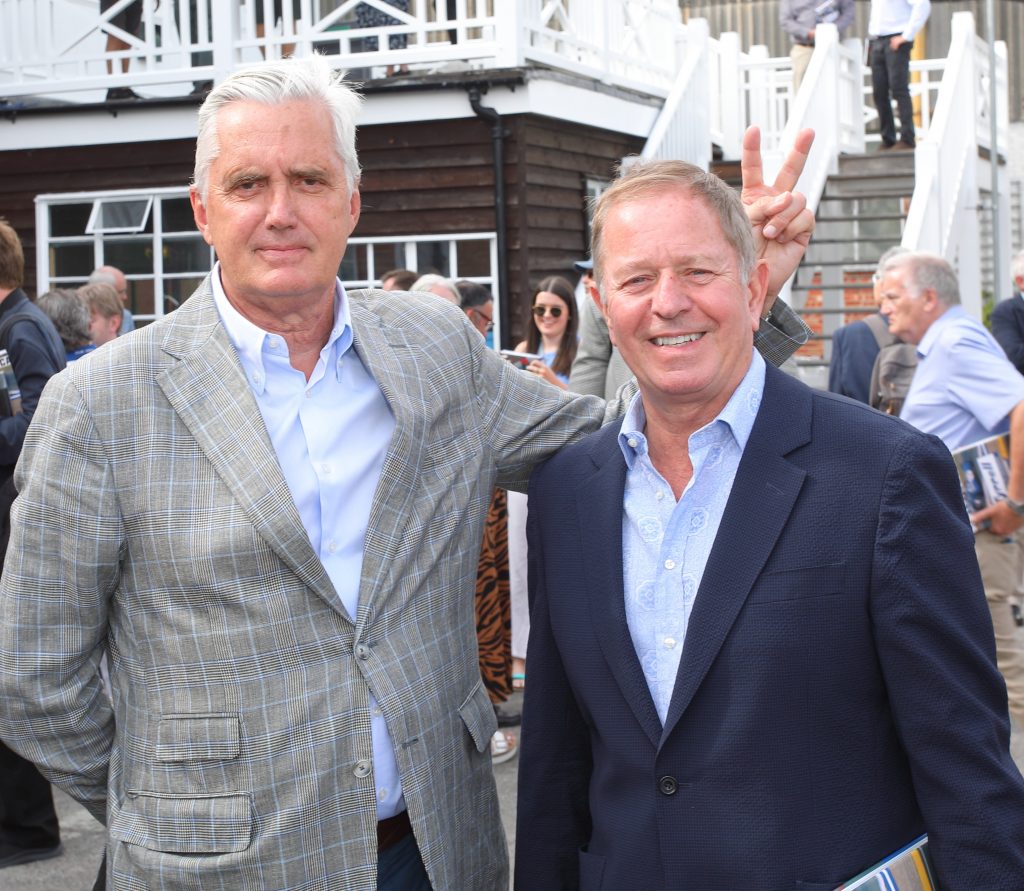
Eddie Cheever was also on hand to provide insight into his time with the team, which yielded five points finishes in 1981. “I didn’t choose Tyrrell – Tyrrell chose me,” he remembered. “I was at Imola, and Ken offered me an option that would be decided upon late in September – he called me up half an hour before that option expire.”
Reflecting further on his time, he said: “One of the first races we went to, I asked for my times on the pit board, and he said they’d never done that for Jackie – my job was to go as fast as I could every lap. For me, that was unheard of. Another memory is around the time of the F1 drivers’ strike, at Zolder. At the start of the race I was unbuckling my belts and about to get out, when the big hand of Ken come down on my helmet. The harder I pushed up, the harder the hand came down.”
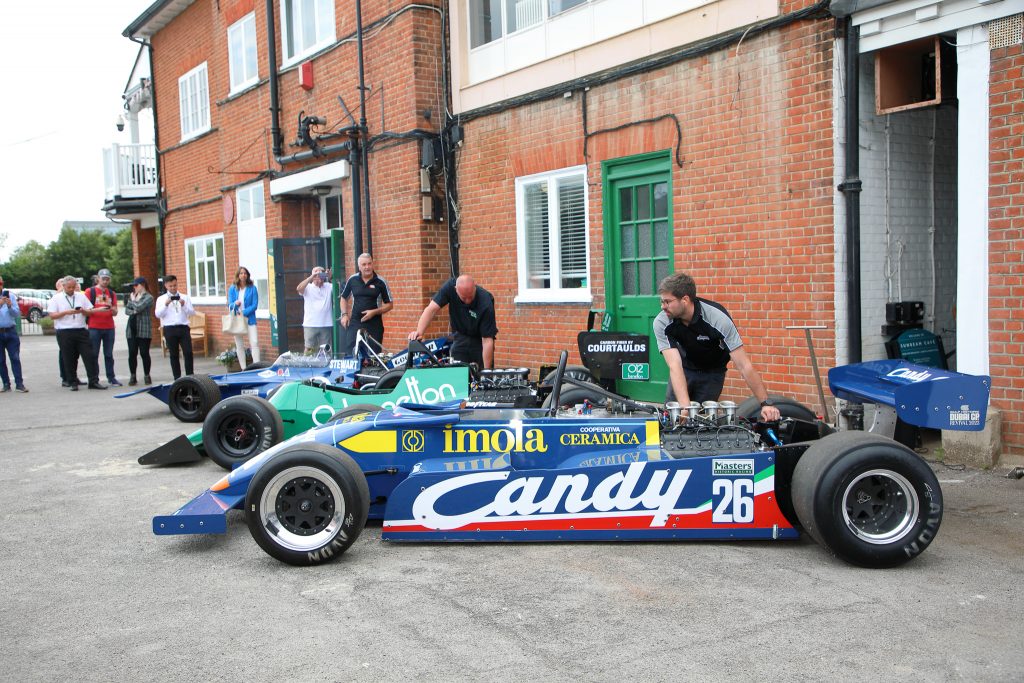
For Martin Brundle, Ken was critical to the racer’s career: “I wouldn’t be here if it wasn’t for Ken and the Tyrrell family – it’s my 40th year in Formula 1, and if Ken hadn’t decided to take a chance on me, I’d still be selling Toyotas in Norfolk,” he said. “In 1983 he decided to give the highest-placed British driver in British F3 a test. It was me and Ayrton Senna running away with it, so I knew it was going to be me. It was one of those lovely crispy cold days with a blue sky, no rain and I just flew – and at lunchtime out came the 012 for me to have a go in, and I went pretty fast in that, too.”
That was November, but Martin had to wait until February to find out whether he’d got the job. “I went to Rio, and did 12 laps and was sick; I was so exhausted and under-prepared for Formula 1. However I told Ken I had £150,000 worth of sponsorship, which I didn’t have. Eventually I was sat in his office and he said to me: ‘Right, the bad news is we don’t have any sponsors. The good news is I’m going to sign you anyway.’ I wanted to get up and sing and dance. I said: ‘Thank you Mr Tyrrell.'” Martin recalled. “Then he said to me: ‘Oh, and I know you don’t have that £150,000.'”
Martin was signed onto a three-year contract, with his money doubling every year. “The problem is, it started at a very small amount,” Martin chuckled. “The team hardly had any money, but it always turned up on the last day of the month, or the day before – it was extraordinary.”
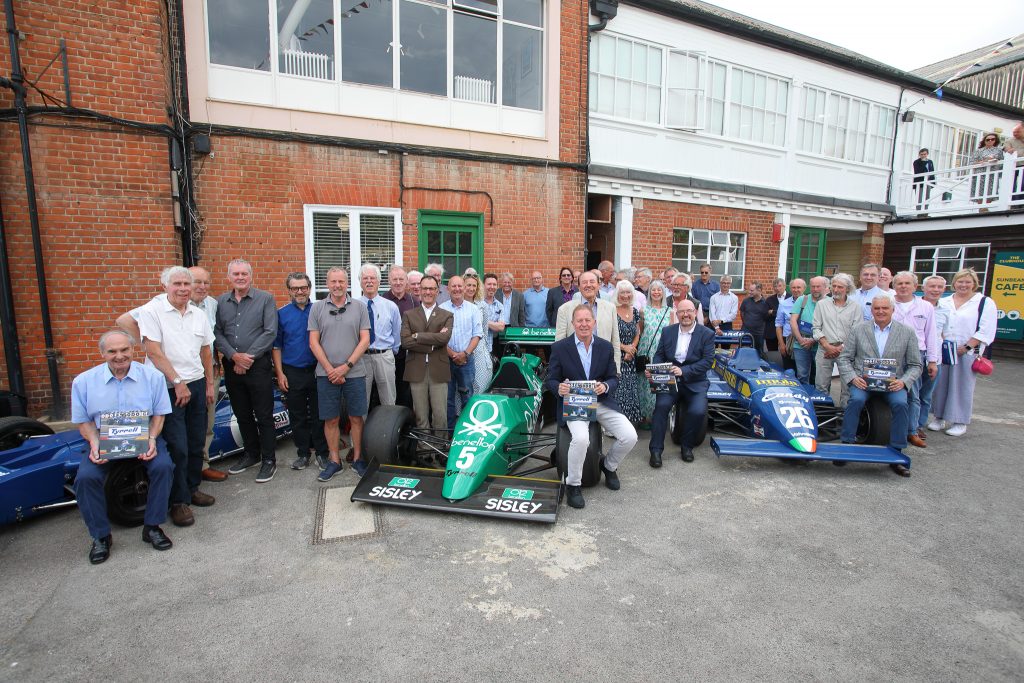
“It was just wonderful – I finished fifth in my first Grand Prix, and then in the fifth race I finished second in Detroit, which I thought he’d be happy about,” he said. “We went out for dinner that night with my engineer, Ken, and representatives from Cosworth, Ford and Goodyear – and he gave me the biggest bollocking. He said: ‘Jackie says you shouldn’t have overtaken Elio de Angelis in the last chicane.’ De Angelis was missing a gear, I’d been following him for five laps, but what Ken knew was that I was getting too confident, it was going too well – Senna was struggling in the Toleman at the time, while my Formula 1 career had just gone gangbusters. Five days later I smashed myself up in Dallas, I hadn’t paid enough attention to what Ken was saying. I broke my legs and feet, and pretty much ruined my entire Formula 1 career.”
As with Eddie, Martin also experienced Ken’s shenanigans when it came to contract options. “My option was November 30, and it was always taken up on November 30,” chuckled Martin. “I had an option to go to Lotus for 1986, and I was talking to Peter Warr. I didn’t know if Ken was going to take the option – he was always struggling for sponsorship – so I went on holiday to Barbados. I thought Ken wouldn’t be able to find me there. Then, on November 30, somebody came onto the beach asking for Mr Brundle, to deliver some papers from Ken – so that was the end of the Lotus drive. However, it was a privilege to be part of Tyrrell.”
Reflecting on the enduring appeal of Tyrrell among racing fans, long after the team’s demise, Martin said: “Ken was a man of total integrity, and he was a racer at heart.”
To find out more about the book, head to www.evropublishing.com. Shelsley Walsh will be hosting a Ken Tyrrell centenary in July 2024 as part of Classic Nostalgia, where there’ll be a chance to see live demonstrations of several Tyrrell cars.

